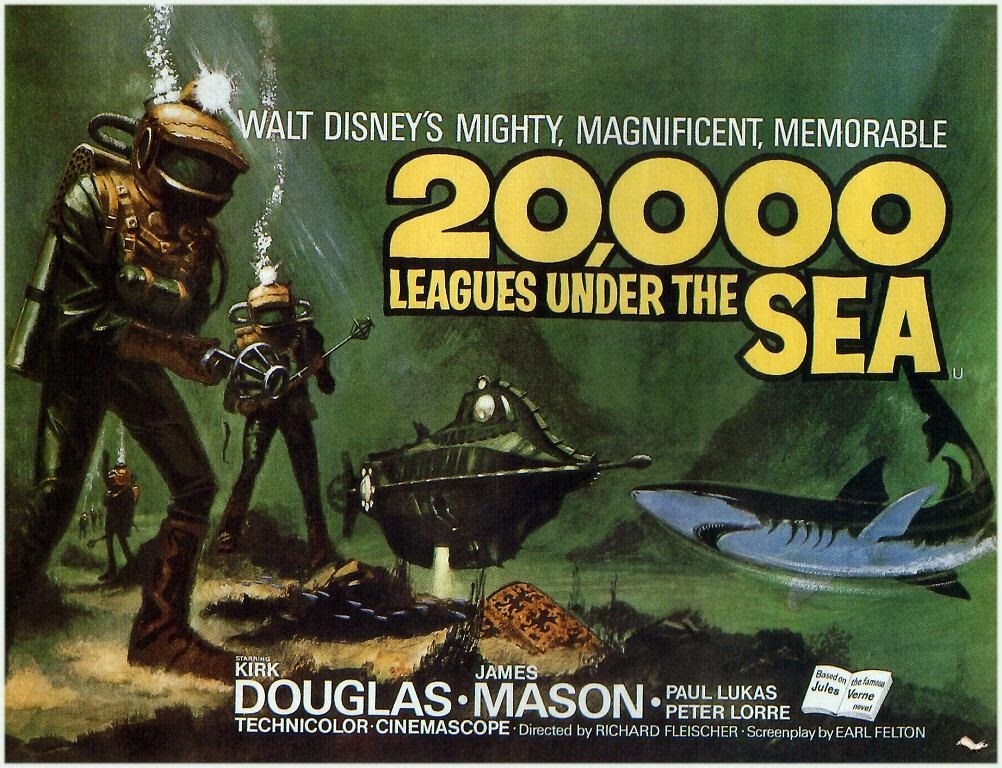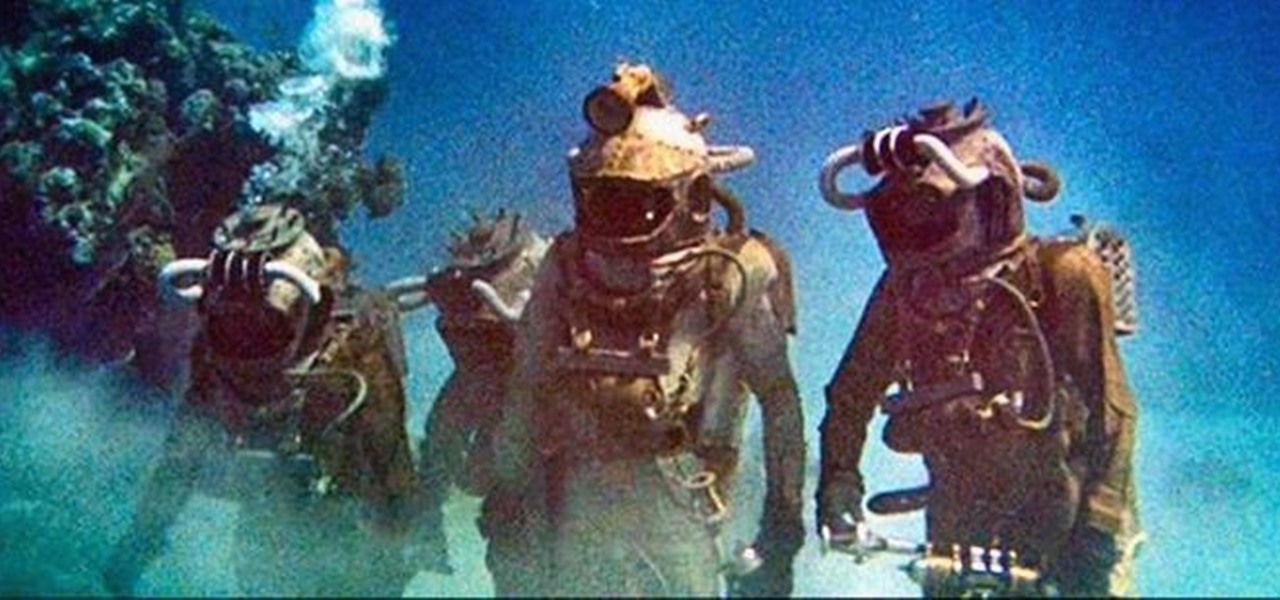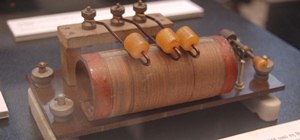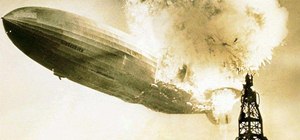I get into conversations about this all the time at conventions when I give panels on Steampunk, so I thought it was time I made this argument in a place where people can read my carefully laid-out thoughts rather than having to listen to me hem and haw and say things like "well..."
Before I go any further, let me state for the record that I am not trying to piss in anyone's Cheerios. The film is arguably good, but if you like it, that's great. I like it, too. I know the stupid song that Kirk Douglas sings by heart, and the film captured my imagination as a child. The small glimpses of Vulcania and Atlantis were tantalizingly short, and I always wanted more of them. So I'm not trying to put the film down, I just don't think it's Steampunk.

That said, the film is absolutely a huge inspiration for Steampunk, just like the novel of the same name, and many other stories that came out of the Victorian era. You can call it "Proto-Steampunk" if it will make you happy... I have no problem with that at all, as it's undeniable that the film has influenced the Steampunk movement. If you're one of those people who gets angry whenever someone tries to define Steampunk, you should probably just move on along, because this post will probably upset you.
Now, with those caveats out of the way, let's look at why this film isn't Steampunk.
1. It's an Adaptation
The most obvious reason why I don't consider this work to be Steampunk is that it's an adaptation of a Victorian work. As I've spoken about at length here and here, Victorian science fiction is an entirely different (though related) entity than Steampunk.

While this film isn't what I would consider entirely faithful to the original text, it's still faithful in nearly all of the ways that matter when it comes to determining whether the work qualifies as being Steampunk or not, most of which I will cover below.
I'll grant that it is possible for an adaptation of a Victorian story to be Steampunk, but this one isn't.
2. It Was Too Close to the Victorian Era
According to the Center for Disease Control, the average life expectancy for people born in 1900 was about 50 years, which means that many people who lived through the end of the Victorian era were still alive in 1954. Much of Steampunk comes, ironically, from how distant the Victorian era is from our modern era; it's that very exoticism, among other things, that drives our interest. In the 1950s, they were still too closely tied to the Victorian era to properly effect a real Steampunk work, because remnants of the Victorian era were still all around them.
As strange as it is to say, they were still too familiar with the real Victorian era!
3. It Uses Nuclear Power, Rather Than Steam or Electricity
In the book, the power source of Nemo's submarine is electricity, yet in the film, they change it to imply that the power source is nuclear.
Now, I see some of you waggling your imaginary fingers at me, saying "But Austin, nuclear power is steam power! The radioactive materials simply heat water which is used to turn a turbine!" Yes, well, that's true. And a modern story in which nuclear materials were used in such a manner during the Victorian era would almost certainly qualify as Steampunk, but that's because we're not carrying along the cultural baggage attached to nuclear power that people were in the 1950s.

Diagram of Nuclear Reactor from ThinkQuest
To get into the real nitty-gritty of why nuclear and electrical are different, it would be pretty wasteful to transfer the nuclear power into electricity and then use that electricity to power the submarine. It's sort of like the difference between driving a car that's an automatic and a manual; the automatic clutch is viscous, and doesn't apply direct kinetic force to the wheels. Even if you're worried about supplying power to the ship's electrical systems, you can generate electricity while still providing a direct kinetic connection from the nuclear generator to the propellers. That is, in fact, how modern nuclear submarines are powered. Anyway, that's not really important to the argument, I just threw that in there for the people who like to object on technical grounds.
This entire section will become more relevant below, so bear with me.
4a. It Represents the 1950s Too Strongly
As I briefly mentioned back near the beginning, Victorian science fiction is a different entity than Steampunk. The reason for this is that Steampunk isn't about the past, it's about the present, just like how Victorian science fiction was about the present at its time, and just like any book is really about the cultural milieu in which it was written regardless of how far in the future or past the story takes place.
This film, 20,000 Leagues Under the Sea, represents a different era than the primary canon of Steampunk works, and I don't mean that it represents the Victorian era. It's true that, as I mentioned above, many who lived in the Victorian era were still alive at the time of its production, but that isn't what I'm talking about. I mean that the film represents the years that it was made, which were in the early 1950s. We don't know exactly how long it took to make the film, but considering that it was released in 1954, it's safe to assume that the production occurred somewhere between 1951 and 1954. As a result, the film very strongly represents that era, and I'll explain why.
I also mentioned above that the film wasn't entirely faithful to the book, and one of the ways that it wasn't faithful is our first example of how the film represented the 1950s: the power source of the Nautilus.
I talked about all of this in the third section above, but what many of you may not know is that in the same year this film was released, the world's very first nuclear submarine, the USS Nautilus, became operational. This submarine, which had been under construction since 1951, made the film especially topical. Whether the film was made specifically to coincide with the completion of this submarine or not is beyond my knowledge, but it certainly can't be a coincidence.

Photo of USS Nautilus by US Navy
Bear in mind that less than ten years earlier, the world bore witness to the ultimate unleashing of man's destructive power at both Hiroshima and Nagasaki. World War 2 was fresh in everyone's mind, and when Nemo speaks of warring against weapons and renouncing his ties to mankind, that message fell on sympathetic ears. Additionally, in 1954 the Cold War was beginning to escalate for the first time. In 1953, the Soviets demonstrated their first nuclear missle, giving rise to the very real fear that American citizens might at any time find themselves under nuclear assault.

Photo of the first Soviet atomic bomb, "Joe One"
You may also recognize the years 1950-1954 as being associated with one of the worst periods in American history: the era of McCarthyism. During this time, Senator Joseph McCarthy raised paranoia to an art form, turning neighbor against neighbor in a feverish attempt to root out Russian spies. Anything that wasn't specifically pro-American suddenly found itself as being labeled anti-American.
Is it such a surprise, then, that a new character was added to the story? An American, Kirk Douglas, who becomes the film's new hero? While Walt Disney Productions was no stranger at that point to unfaithful adaptations, 20,000 Leagues Under the Sea was the first film to go so far as to change the protagonist of the story. Further, while most of their other films seem to have been changed in an effort to make their stories more accessible to children, the addition of Kirk Douglas as Ned Land was otherwise unnecessary considering the comical casting of Peter Lorre as Conseil, not to mention the stellar performance of the unnamed seal.

Between the real USS Nautilus, the fear of global nuclear war, and McCarthyism, this film was not simple escapist fiction, but a very real product of current events safely hidden beneath the veneer of the past.
4b. How Is That Different from Any Other Steampunk Work?
Like I said earlier, every work is ultimately a product of the era which gave it birth, so why is this particular film any different than, say, the "Wild Wild West" TV series, which I would firmly classify as Steampunk? Doesn't that represent the 1960s just like 20,000 Leagues represents the 1950s?

Photo of "The Wild Wild West" from Zap2It
Yes, of course they both represent their respective eras, but there's a difference. What it comes down to is that the 1960s were much more like the 2000s than the 1950s were. In order to understand this idea, we have to examine history a little closer.
Some of you may be familiar with the ideas of modernism and post-modernism as social theories rather than as types of art. For those who aren't, I'll explain briefly. The term "modernism" encompasses a variety of styles and philosophies found in the Victorian era which stretched out to the end of World War 2. In the aftermath of the war, the collective prevailing social styles and philosophies became known as "post-modern".
How modernism and post-modernism relate to Steampunk can be a massive article all on its own, but let's just say for a minute that the transition point between the two is still very close to the 1950s. In fact, if you look back through time, each decade's "identity" doesn't go from year 1 to 10. For example, what we think of as "the 1970s" in terms of music, style, fashion, etc. really stretched from about 1973-1983. What I'm trying to say is that this film, 20,000 Leagues, was being developed under the influence of the 1940s, which carries a lot of weight due to the massive transitions occurring at that time which are in many ways reflected in, as I said, the transition from modernism to post-modernism.
In effect, 20,000 Leagues and "Wild Wild West" aren't actually only a decade apart, but are in fact two decades apart in terms of those decade's identities. It wasn't until the late 1950s or early 1960s that post-modernism really began to make its presence felt (culminating, some would say, in the 1960s and 1970s). For now, take my word for it that Steampunk is post-modernist, and that 20,000 Leagues is modernist. That, more than anything, reflects why 20,000 Leagues is the odd man out.
In many ways, 20,000 Leagues was a film before its time. The 1960s saw a glut of Victorian and Edwardian-inspired films and television shows, which is largely due to the rising influence of post-modernism. We had "The Wild Wild West", Chitty Chitty Bang Bang, The Great Race, Master of the World, Captain Nemo and the Underwater City, and more. We're still in an era of postmodernism (though some argue we're now post-postmodernist), which is why the works created in the 1960s and onward resonate with the 2000s more than those created in the 1950s.
Not Convinced?
You don't have to be. 20,000 Leagues does look very Steampunk, so if it looks like a duck and quacks like a duck, it probably is a duck. I hope I've raised enough ideological differences, though, that you've begun to understand that while the aesthetics may look very Steampunk, the film's ideology and origin come from a very different place than what we now think of as Steampunk.
If a person can be a Steampunk while not wearing any Steampunk clothes, clearly there's a non-aesthetic attribute that designates something as being (or not being) Steampunk. That attribute is ideology, which is why Walt Disney's 20,000 Leagues Under the Sea is not Steampunk.









































9 Responses
I had no idea such controversy even existed! It's been so long since I watched this movie, but this inspires me to watch it again to check out all of the "Proto-Steampunk"—too bad you can't stream it on Netflix.
Where there's nerdery, there's controversy. ;)
Honestly, there needs to be more analysis on what steampunk as a genre really entails (and what it doesn't) as anything based purely on an aethetic, or worse who's definition is nebulous is destined to be looked at as nothing more than a fad or a joke, and you're already starting to see that happen with Steampunk. You certainly might decrease some of the terrible films coming out of Hollywood that are getting labeled as Steampunk at the very least.
I totally agree, James. There are a lot of people who fight tooth and nail against defining Steampunk, but if we're not doing something, then we're doing nothing.
I want what we do to mean something. I mean, it already means something, but I want people to recognize that and work toward it consciously. Because otherwise it's just all pointless, you know? And it'll never amount to anything.
I've been reflecting on this article a bit, and I'm interested in your thoughts on the possibility that the television series Wild Wild West is probably more proto-steampunk than 20,000 Leagues. See, I've never really considered WWW steampunk, though it's very close, and I think this is one of the reason's the movie so missed the boat. WWW is for all practical purposes James Bond in the wild west. James Bond might utilize clever examples of cutting edge science, but it isn't considered SF, and while it might be considered fantasy, it's not what we typically think of when we consider that genre. It was Fleming who said that the Bond character should just skirt the lines between being fantastic and probable. The worst Bond films are the ones that forget this dictum. I think WWW followed this axiom for the most part, in that they were clearly not attempting to be alternate history. Just because it takes place in the 1800's doesn't necessarily make it SP any more than an episode of the Avengers, which had some equally amazing technology. It seems (to me at least) that the SP element has to be on some level "world-changing" affecting commoners and the elite equally. At the end of each ep. of WWW the status quo was re-established ( consider what the world would be like if the govt just once managed to get their hands on one of Loveless's inventions). Unlike the Fleming paradigm, a full blown SP work acknowledges the conceit; they have the technology and they revel in it. Consider Steamboy as the prime example.
Thanks for the thoughtful response, James! I'll try to answer as best as I can. =)
So, I do consider WWW to be Steampunk, and I'll tell you why.
First, the Bond comparison is good. WWW was absolutely James Bond in the Old West, just like Star Trek was a Western in Space.
However, despite being clearly analogous to other contemporary media, they still managed to carve out a unique niche for themselves. I don't think anyone will argue that Star Trek is more of a Western than it is Sci-fi, and likewise, I think it's mistaken to compare WWW too strongly to James Bond while missing the elements that made it different.
I don't believe that in order for a work to be Steampunk, it needs to take place in an entire Steampunk world, or be "world-changing", as you said. For example, you can easily have a Steampunk tale which takes place in the more-or-less real Victorian era, yet follows a lone inventor who creates a steam-powered... banana. Or whatever. And then at the end of that story, the steam-powered banana is lost, returning history to its proper course.
I don't at all see that being at odds with Steampunk's ideology.
Now, I'll grant you that it starts to get a little iffy if you're stuck to the idea that Steampunk is alternate history. Because as you said, it can't be alternate history if history doesn't actually change. However, Steampunk is more than just alt history; it overlaps many other genres at will, such as post-apoc, fantasy, horror, romance, and many others. The reason it can do this is because Steampunk isn't really a genre, at least not the way we used to think of them.
It's an aesthetic and a set of tropes that have been bundled together and sold as a package deal. In fact, that may be the best definition of Steampunk that I've ever written. =)
Anyway, I hope that helps!
I believe the seal's name was Esmeralda in the movie.
It is doubtful you will see this let alone respond but I can hope. I don't really care if something is or is not Steampunk. But I do enjoy reading others opinion about it, helps with the imagination.
Your explanation of whether nuclear being Steampunk or not makes no sense to me, I am hoping you can reexplain it. Now, I would agree that nuclear defined the 50s, but saying traditional nuclear power is not a steam engine because of scale , would be saying that mechanical clocks have nothing in-common with a vehicle transmission because of scale, yet, the mechanics and purpose of each are the same, sans some safety procedures.
Wrong.
Share Your Thoughts